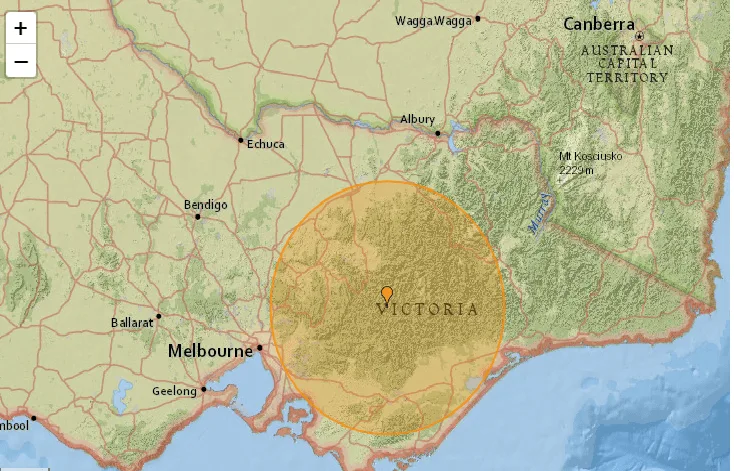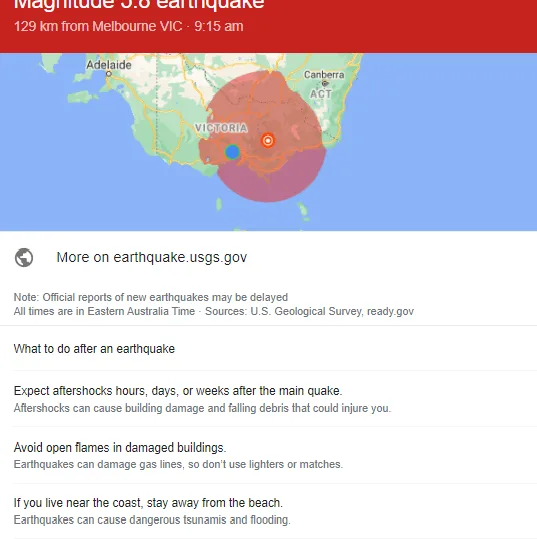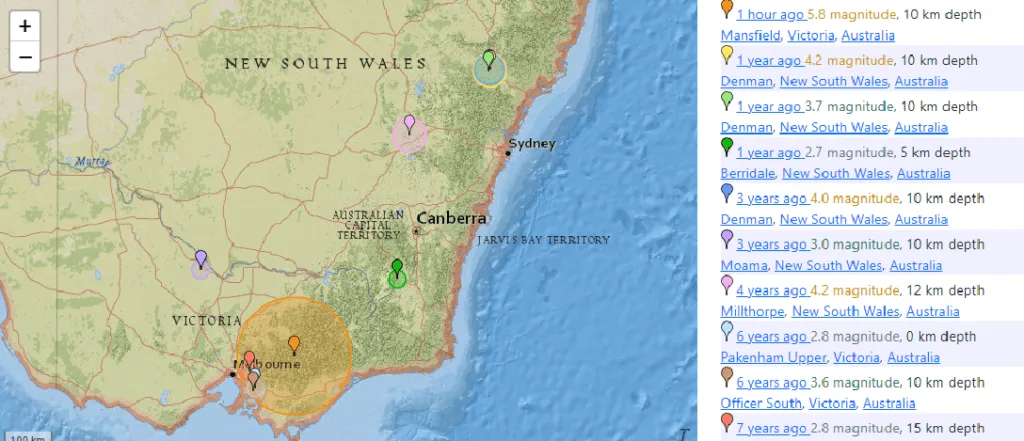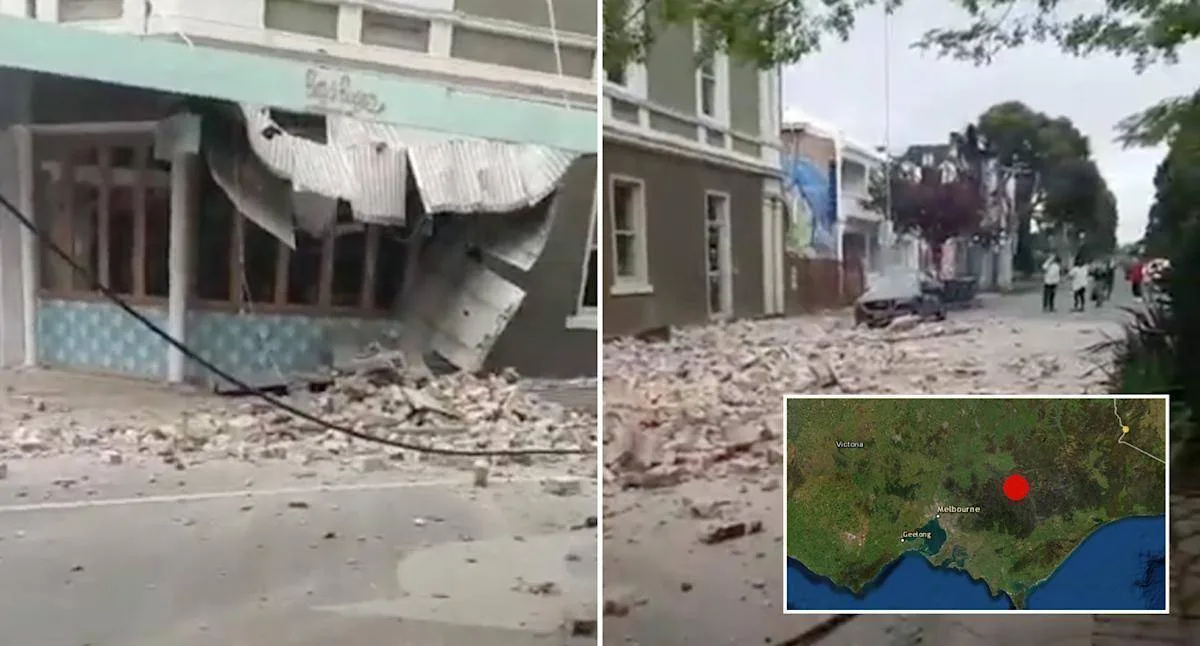At 9:15 GMT+10 Melbourne was rocked by a 5.8 magnitude earthquake. Earthquake track reported the epi centre was in Mansfield located 190.1km from Melbourne’s CBD and came from a depth of 10kms beneath the earths surface.
The last earthquake in Melbourne was felt 6 years ago also from a depth of 10km and was recorded at a magnitude of 3.6 in Officer South.
The state emergency service has received reports of building damage across Melbourne, a spokesman said. Three calls had come from Kensington as well as from Flemington, Brunswick, Ascot Vale, Maidstone, Northcote, Parkdale, Prahran and West Melbourne.
Earthquake information
UTC time: Tuesday, September 21, 2021 23:15 PM
Your time: Wednesday, 22 September 2021, 09:15 GMT+10
Magnitude Type: mww
USGS page:M 5.8 – 38 km S of Mount Buller, Australia
USGS status: Reviewed by a seismologist

The area is expected to experience aftershocks for days to weeks.
Google.com is currently presenting data on local search. Explaining what to do after an earthquake

Dr. Judith Hubbard, Structural geologist: Plate tectonics to earthquakes, and everything in between commented on twitter.
“This the biggest such event in the global catalogues. But despite being >1500 km from the nearest plate boundary, that area has definitely been seismically active over the years. A reminder that earthquakes can happen within plates too!”
The quake was powerful enough to turn older buildings in the Melbourne CBD to rubble as captured in a video first appearing on twitter.
Melbourne’s earthquake history

Dr Januka Attanayake, head of research with the Earth Sciences Unit for Earthquake Seismology at the University of Melbourne, said preliminary estimates indicate the earthquake is of a magnitude of 5.8 to 6.0.
“If these preliminary estimates are correct, it is probably the largest earthquake we have felt around Melbourne in the past 175-200 years,” Attanayake said. “If it’s a magnitude 6.0, it’s the first in hundreds of years. This is the first earthquake of this magnitude that I have seen here in my life, and it has probably not been seen during the lifetime of several generations ”.
“Every year we register about 400 earthquakes of less than 2.5 magnitude,” he said. “So earthquakes are no exception.”
Typically, Attanayake and his team installed more seismometers afterwards to try to detect aftershocks that could last for months, but due to travel and work restrictions associated with Covid-19, this was not possible, he said. Existing seismometers have already recorded two significant aftershocks with strengths of 2.5 and 3.0 points.
“It’s an important job because if we can detect the aftershocks, we can detect the fault area that has ruptured,” he said. “We need to know this information for a proper analysis of future risks. It helps us detect predicted ground movements of earthquakes in the future. This is essential information for engineers who will build urban structures in the future, as we can say, for example, how much ground movement can be expected in a given place over the next 50 years. “







